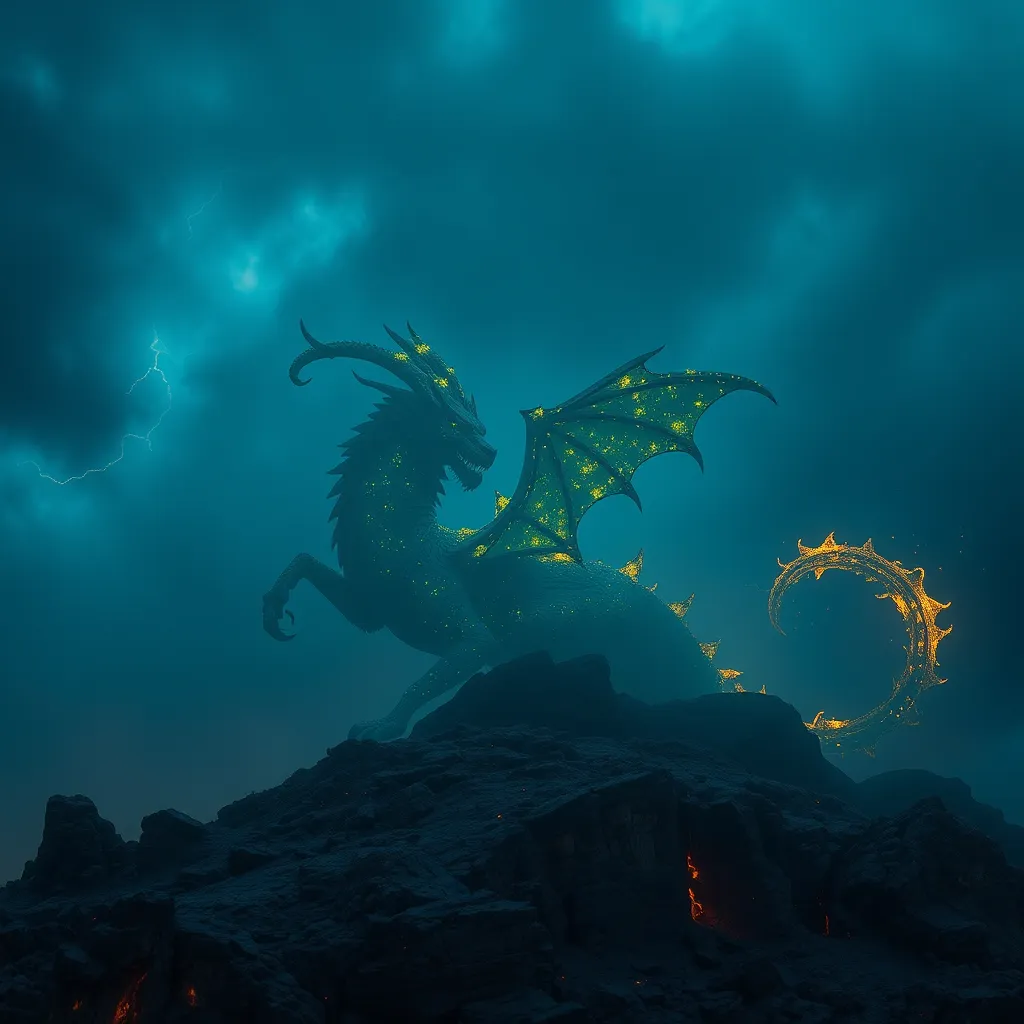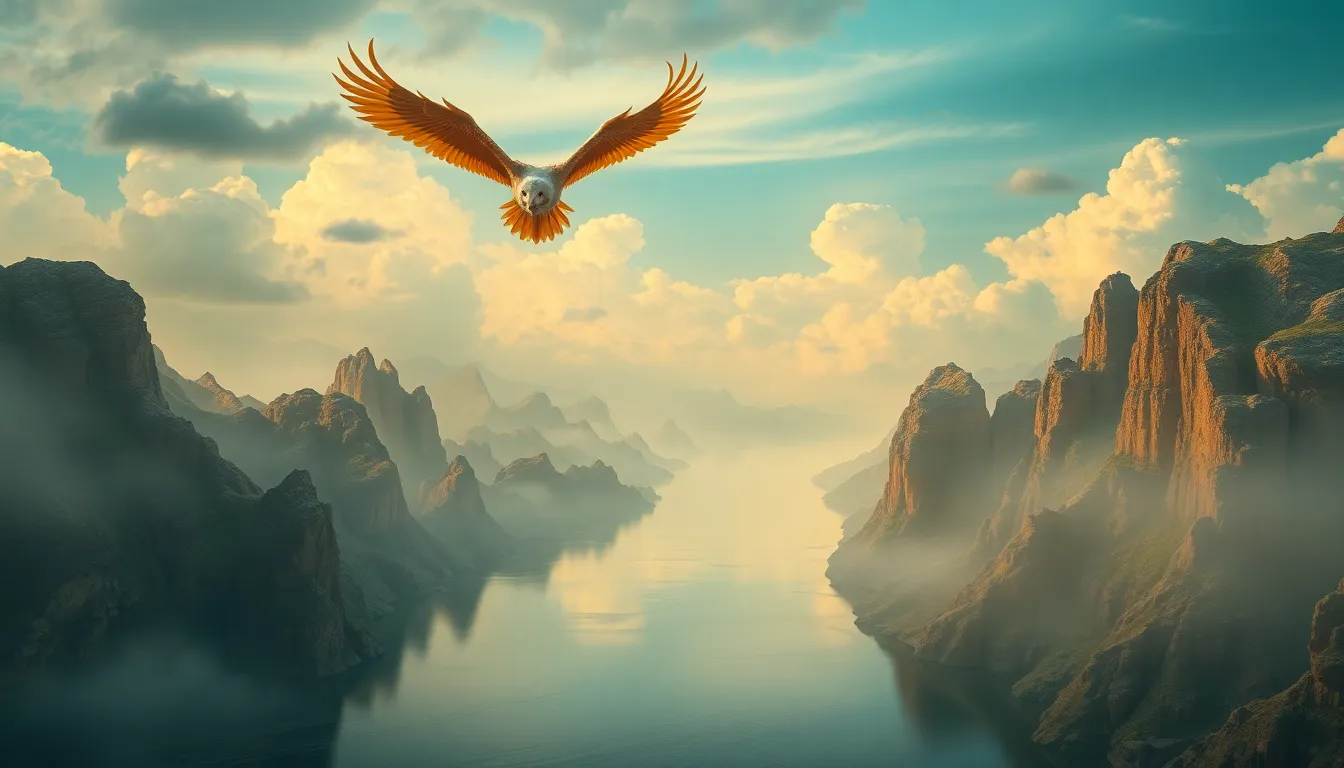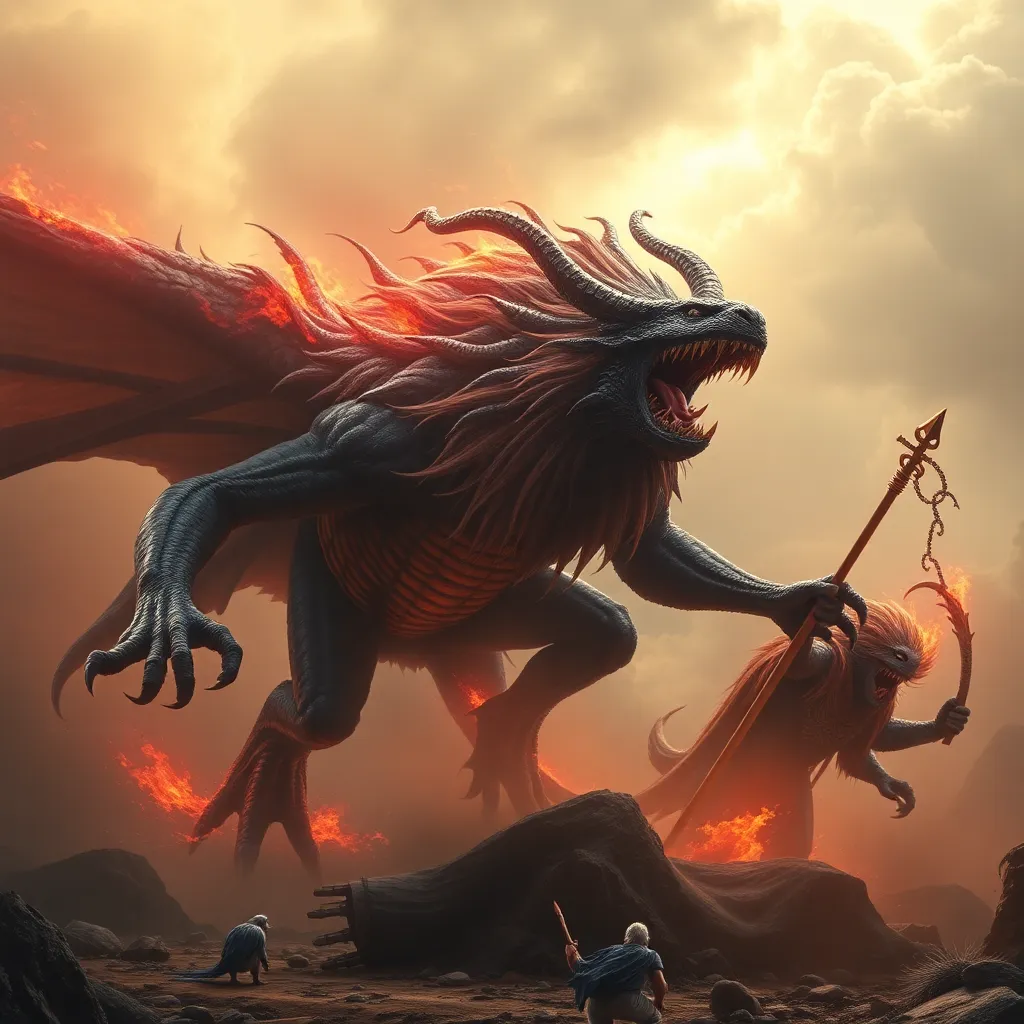The Chimera: A Global Mythological Phenomenon
I. Introduction
The Chimera is a fascinating and complex creature originating from ancient mythology, often depicted as a monstrous hybrid composed of parts from various animals. In Greek mythology, this beast typically features the body of a lion, the head of a goat protruding from its back, and a tail that ends with a snake’s head. The Chimera symbolizes chaos and the blending of different forces, making it a rich subject for exploration across various cultures.
This article aims to delve into the significance of the Chimera in mythological narratives worldwide, examining its historical origins, cultural interpretations, and relevance in modern society. Through this exploration, we hope to uncover the deeper meanings and implications of this mythological phenomenon.
II. Historical Origins of the Chimera
The origins of the Chimera can be traced back to ancient Greek mythology, where it is featured prominently as a fearsome creature that breathed fire and terrorized the land. The legendary hero Bellerophon is famed for defeating the Chimera with the help of the winged horse Pegasus, symbolizing the triumph of order over chaos.
In early literary works, such as Homer’s “Iliad,” the Chimera is referenced as a metaphor for insurmountable challenges and obstacles. The use of the creature in these texts highlights the Greeks’ concerns with the natural and supernatural world and their desire to impose order on chaos.
Moreover, archaeological evidence in ancient art, including pottery and sculptures, showcases the Chimera’s significance in Greek culture. These artistic representations serve as a testament to the creature’s impact on the collective imagination of ancient societies.
III. The Chimera in World Mythologies
While the Chimera is primarily associated with Greek mythology, similar creatures can be found in various cultures around the globe. These entities often embody similar themes of chaos and the blending of different elements.
A. Similar creatures in various cultures
- The Chinese Qilin: Often depicted as a dragon-like creature with hooves, the Qilin is a symbol of prosperity and good fortune. It is associated with the arrival of wise rulers and is said to appear during times of peace.
- The Indian Garuda: A mythical bird and the vehicle of the god Vishnu, Garuda represents strength and power. It is often portrayed as a hybrid creature with a human body and bird-like features, symbolizing the balance between the earthly and the celestial.
- The Mesoamerican Quetzalcoatl: Known as the feathered serpent, Quetzalcoatl is a deity associated with wind and learning. This creature embodies the duality of earth and sky, much like the Chimera’s representation of conflicting forces.
B. Comparative analysis of characteristics and symbolism
Despite their cultural differences, these creatures share common themes of duality and conflict. They often symbolize the struggle between chaos and order, representing the complexities of existence and the nature of life itself.
IV. Symbolism and Interpretation of the Chimera
The Chimera is rich in symbolism, often interpreted as a representation of chaos and fear. It embodies the unpredictable nature of the world, highlighting humanity’s struggles against forces beyond control.
A. The Chimera as a representation of chaos and fear
In mythology, the Chimera often serves as a reminder of the chaos that can arise when different elements collide. Its fearsome appearance evokes a sense of dread, reflecting the fears that ancient societies faced.
B. The duality of creation and destruction
The Chimera also represents the duality of creation and destruction. While it is a monstrous entity, it is also a product of the intertwining of different species, symbolizing the complexity of life and the potential for both beauty and horror.
C. Modern interpretations and psychological symbolism
In contemporary psychology, the Chimera is often viewed as a symbol of the human psyche, representing the multiplicity of identity and the internal conflicts individuals face. It serves as a metaphor for the different aspects of the self, encompassing both light and dark elements.
V. The Chimera in Modern Culture
The influence of the Chimera extends beyond ancient texts and into modern literature and popular culture. Its legacy continues to shape narratives and artistic expressions in contemporary society.
A. The Chimera in literature and pop culture
In literature, the Chimera appears in various forms, from fantasy novels to science fiction. It often symbolizes the conflict between humanity and monstrous forces. Films such as “Clash of the Titans” and animated features like “The NeverEnding Story” incorporate elements of the Chimera, exploring themes of bravery and the battle against chaos.
B. The Chimera as a symbol in art and advertisements
In the realm of art, the Chimera has inspired numerous works, serving as a potent symbol of hybridization and the blending of different cultures. Advertisements also utilize the Chimera’s imagery to convey ideas of innovation and transformation.
C. Influence on contemporary fantasy and gaming
In the world of gaming, the Chimera has become a staple character, often represented as a formidable opponent or a unique ally. Its presence in fantasy games underscores the ongoing fascination with mythological creatures and their narratives.
VI. Scientific Perspectives: The Chimera in Genetics
Beyond mythology, the term “chimera” has found a place in the field of genetics. In biology, a chimera refers to an organism containing cells from two different zygotes, resulting in a composite structure.
A. Definition of “chimera” in biological terms
Biologically, chimerism occurs naturally in some species, leading to fascinating phenomena such as animal hybrids or organisms with distinct cell lines.
B. Examples of chimerism in nature
- Animal hybrids: Instances of hybridization can be seen in ligers (lion-tiger hybrids) and mules (horse-donkey hybrids), showcasing nature’s own chimeric creations.
- Human chimeras: Rare cases of chimerism in humans have been documented, leading to complex medical and ethical discussions.
C. Ethical implications and scientific advancements
The study of chimerism raises ethical questions, particularly in the context of genetic research and biotechnology. As scientists explore the possibilities of creating chimeric organisms for medical purposes, society must grapple with the implications of such advancements.
VII. The Chimera’s Impact on Modern Society
The Chimera serves as a powerful metaphor in contemporary discussions about identity, culture, and the environment. Its multifaceted nature resonates with the complexities of modern life.
A. The Chimera as a metaphor in discussions of identity
In a world characterized by globalization and cultural blending, the Chimera represents the hybrid identities many individuals navigate. It embodies the merging of traditions and the creation of new cultural expressions.
B. Cultural appropriation and the blending of mythologies
The Chimera’s existence in multiple cultures raises questions about cultural appropriation and the respect for mythologies. It prompts discussions on how societies can honor their heritage while embracing new influences.
C. The role of the Chimera in environmental and societal narratives
Environmental discussions often utilize the Chimera as a metaphor for the interconnectedness of ecosystems. The blending of different life forms reflects the intricate balance necessary for survival, emphasizing the need for harmony between humanity and nature.
VIII. Conclusion
In conclusion, the Chimera is a multifaceted symbol that spans cultures and epochs, representing chaos, hybridization, and the complexities of life. Its enduring legacy in myth and culture reflects humanity’s ongoing fascination with the unknown and the blending of different forces.
As we explore the rich tapestry of mythological creatures, the Chimera invites us to consider our own identities and the myriad influences that shape our existence. Its story continues to inspire and provoke thought, encouraging further exploration of the diverse mythologies that enrich our global heritage.



